High temperature is the sworn enemy of a processor. That makes the CPU cooling fan its greatest ally.
But adjusting the RPM of the CPU fan often gets overlooked, especially by first-time PC builders. This affects the processor and, in turn, the whole computer.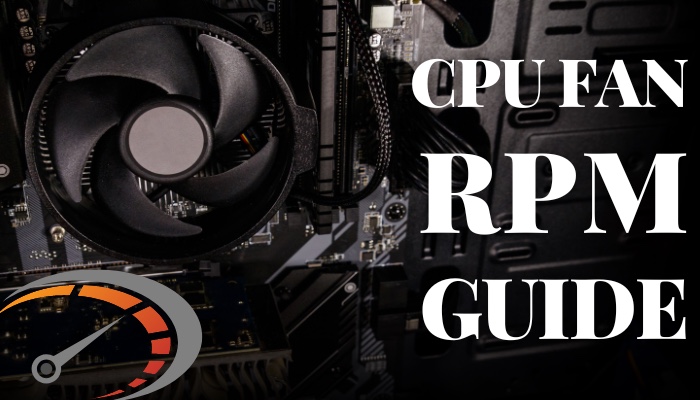
That’s why in this article, I’ll explain the best speed for the CPU fan, and how you can monitor & automatically modify the RPM according to the CPU temperature.
Let’s begin!
Does CPU Fan Speed Even Matter?
Yes, it very much matters how fast you choose to run your fans on the PC. It controls your CPU temperature, the lifespan of both the processor and the fan, power consumption along with other factors. It also impacts the performance of your device.
Here are the different elements that high and low RPM fan speed controls:
| Parameter | High RPM | Low RPM |
|---|---|---|
| CPU Temperature | Remains low | Increases |
| Noise level | High | Low |
| Power consumption | More | Less |
| CPU lifespan | Increases | Decreases |
| Fan lifespan | Decreases | Increases |
| Cleaning cycle | More frequent | Less frequent |
| Overclocking possibility | Can safely overclock | Shouldn’t overclock |
So you see, high-speed fans will keep the CPU temperature regular, increasing its lifespan, but you’ve been warned that your PC will sound like a jet engine. Also, you must use high RPM if you are planning to OC your processor or using one that’s already been OCed.
On the other hand, low RPM will give you less noise, low power consumption, and less dust & dirt collected by the fans, but it comes at the cost of high CPU temperature, reducing the lifespan.
Should You Run Your PC Fans at Full Speed?
Although setting the CPU fan speed at 100% will give you a low processor temp, the fans running at full speed will wear out much quicker. You need to keep a balance between performance and temperature, and 70% RPM will generally provide an optimum result.
But for gamers, if the processor temperature reaches 70°C or higher, set the fan speed to full, and when the computer is under low pressure, set it to around 50% of the total RPM.
However, by no means it’s a fixed measurement. Because the fan speed greatly relies on the size and design of the PC case. The fan RPM should be enough to keep the processor from overheating and hold the temperature within a safe zone when full-load.
You’ve got many options to adjust the CPU fan speed through software, like MSI Afterburner, SpeedFan, and other manufacturer-specific motherboard control panels.
These applications let you modify the fan speed to a fixed percentage of the maximum RPM. Also, you can create a temperature vs. fan rotation speed curve that automatically sets the RPM according to the CPU temperature.
So, when the processor runs hot, let’s say, reaches 80°C or more, the fans should rotate at full speed until the CPU cools down. And in an idle state, the fans should run at a low speed, so they wouldn’t produce too much noise.
What is a Good RPM for a CPU Fan?
Generally, a CPU fan completes 600 to 3000 rotations every minute, and the ideal fan speed is 50 to 75% of the maximum RPM. This speed depends on the dimensions of the fan. Smaller fans rotate faster, while larger fans are slow and quiet.
So you see, the fan size controls the rotation frequency of the fan.
Below I’ve listed the ideal RPM for CPU fans according to their dimensions:
| Fan Dimension | Fan RPM Range | Ideal Fan Speed |
|---|---|---|
| 80mm Fans | 800 – 2500 RPM | 1250 – 1600 RPM |
| 92mm AMD Wraith Prism (Stock Cooler) | 600 – 2800 RPM | 140 – 1850 RPM |
| 92mm Intel Laminar RM1 (Stock Cooler) | 600 – 3150 RPM | 1575 – 2100 RPM |
| 92mm Fans | 600 – 2000 RPM | 1000 – 1300 RPM |
| 120mm Fans | 500 – 1500 RPM | 750 – 1000 RPM |
| 140mm Fans | 400 – 1200 RPM | 600 – 800 RPM |
To find the ideal processor fan speed, you have to keep in mind that the RPM should be high enough to keep the CPU cool and doesn’t compromise the performance while being relatively quiet and doesn’t wear out too often.
You must maintain a balance between Fan RPM = CPU temperature = CPU performance = Noise.
But simply doubling the fan speed won’t cut the CPU temperature by half.
There are other factors at large such as ambient air temperature, heat spreader, heat pipes, radiator, and thermal paste, all working together to run the processor as cool as possible. Fans are just a part of it.
How to Find Out Your Computer Fan Speed
Open Hardware Monitor to check the RPM at which the CPU fans are running. You can get to the Hardware Monitor from the BIOS mode of your device. Also, use third-party applications like MSI Afterburner, and SpeedFan to identify and control the fan speed.
Here are the steps to find out your computer fan speed:
Check Fan Speeds from BIOS
Using the BIOS, you can check and modify all the fans that are connected to the motherboard.
Here’s how to check fan speed from BIOS:
- Close all the programs and shut down your computer. Then restart it.
- Press the key that takes you to the BIOS mode continuously when you see the PC’s startup screen. Depending on the motherboard manufacturer, the BIOS key can be F10, F11, F12, Esc, or Del.
- Proceed to the Hardware Monitor tab. From there, you can open and change the fan speed.
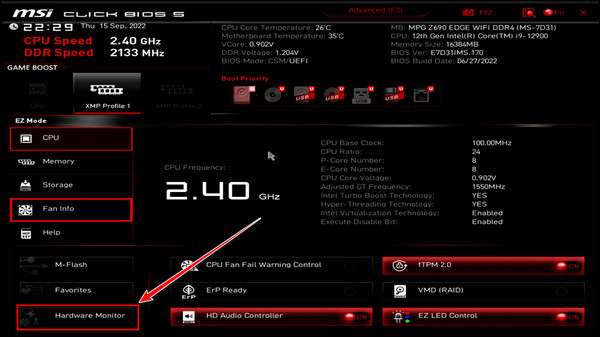
In case you don’t see the Hardware Monitor option, you’ll find it in the Advanced BIOS settings.
If you still don’t see the fan in the BIOS mode, follow the methods to fix the CPU fan not detected in BIOS.
Use Third-Party Apps to Check Fan Speeds
If you don’t want to mess with the BIOS, there are several apps available dedicated to controlling the CPU fans, SpeedFan, SpeedTemp, and MSI afterburner.
Here’s how to use SpeedFan to check fan speed:
- Download & install SpeedFan and open it.
- Go to the Readings tab.
- Check the RPM for the CPU Fan.
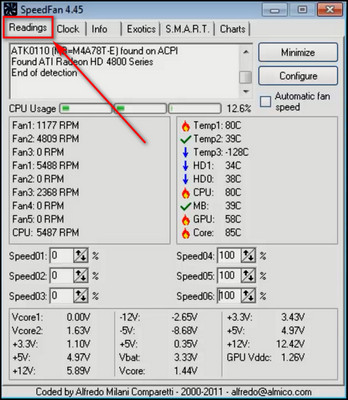
Now that you know how to check the CPU RPM, let’s see how you can modify it to your advantage.
How to Control CPU Fan RPM Speeds
You can adjust the CPU fan speed from the BIOS or use the SpeedFan program. But before you do that, you need to check the CPU fan connector to determine whether you can modify the fan RPM.
4-pin connectors are the most customizable, while 3-pin fans only have power regulation.
If you already know what kind of CPU fan you have, great! But in case you don’t know, shut down the computer, open up the PC case, disconnect the CPU fan, and check the connector type.
Most modern motherboards have a 4-pin, which is Pulse Width Modulation (PWM) connector. You can easily control these fans both with software and hardware.
These fans are voltage regulated, meaning when the processor executes high-intensive tasks, PWM increases the voltage to the fan, raising the RPM, and when the CPU cools down, the fan automatically lowers its speed.
However, with 3-pin DC connectors, you regulate the power to control its speed which is not as reliable as the 4-pin fans.
Below I’ve provided 2 different ways to modify the speed of CPU fans as you like.
Here are the steps to control CPU fan RPM speeds:
1. Set the Fan Curve in the BIOS
When you enter the BIOS or UEFI mode, you can easily modify the CPU fan, such as whenever the processor reaches a particular temperature, you’ve set, the fans’ RPM increases. Then decreases automatically when the CPU cools down.
Here’s the process to set the fan curve in BIOS:
- Restart your computer and enter into BIOS.
- Select the Hardware Monitor option. If you don’t see it, you’ll find the option in the Advanced tab.

- Choose CPU to adjust the CPU fan.
- Select PWM if you have a 4-pin CPU fan connector or choose DC in case you have a 3-pin connector.
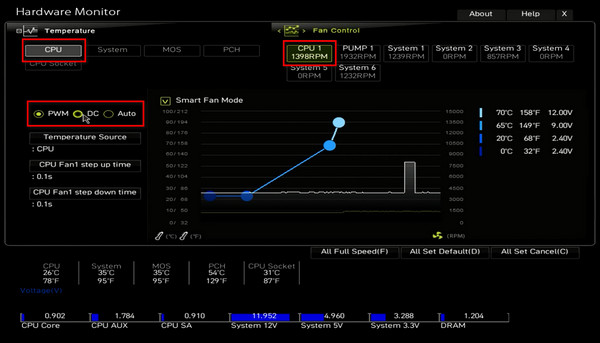
- Pick CPU for Temperature Source.
- Set the CPU Fan step up & step down time from 0.1 to 1 second. A shorter time means the transition of the fan RPM according to the processor temperature will be quicker.
- Put a checkmark on Smart Fan Mode, which allows you to adjust the fan curve with 4 nodes.
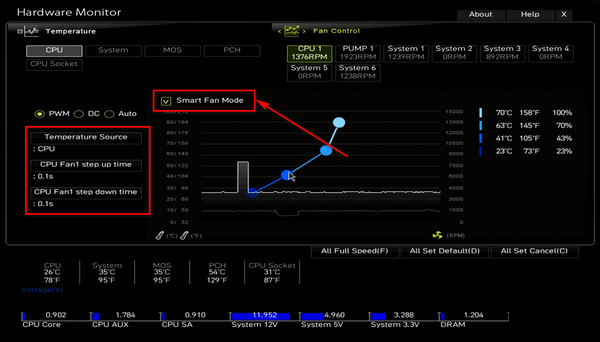
- Use the nodes to set the fan speed curve according to the processor temperature.
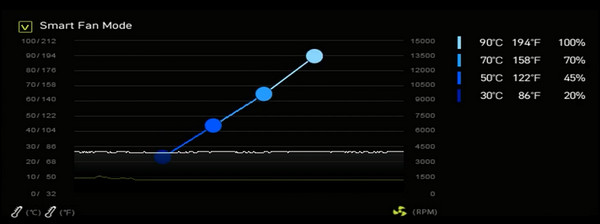
- Save the changes and exit from BIOS.
If you don’t want to mess with the BIOS settings, you can still change the CPU Fan speed without BIOS.
2. Adjust the CPU Fan Speed Using SpeedFan
You can use the SpeedFan app to modify the CPU fan rotation speed.
Here’s how to adjust the CPU fan speed using SpeedFan:
- Launch the SpeedFan app on your device.
- Click on the Configure button.
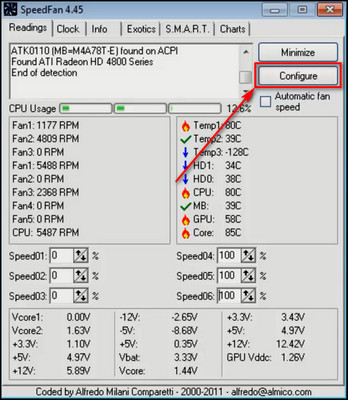
- Go to the Fan Control tab.
- Put a checkmark on Advanced fan control.
- Click on the Add button to create a new fan controller profile and provide a Name. If you want to control multiple fans in your rig, you need to make multiple profiles.
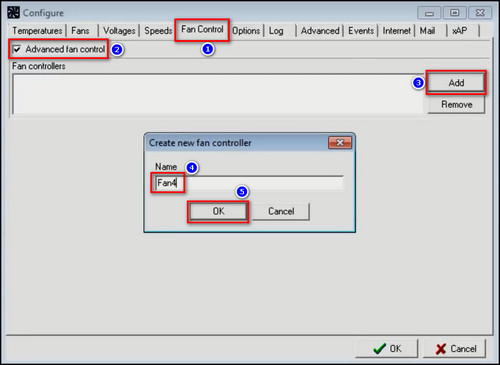
- Enable Controlled speed and use the dropdown menu beside it to select your CPU fan.
- Click on the Add button under Temperatures and select the temperature you want to use to control the fan, then click OK.
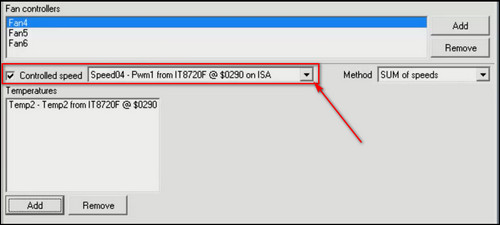
- Select the processor temp from the Temperatures box, and a fan curve will show up.
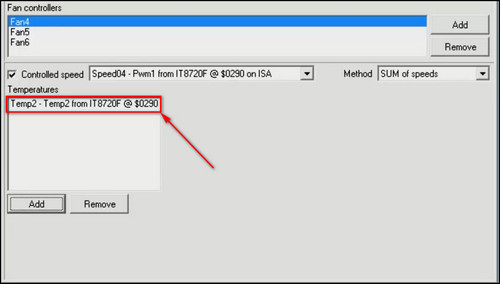
- Adjust the fan speed by clicking on the graph. Each dot tells the system at what temperature the fan should be at what speed.
- Click the OK button once you’ve set up everything to your liking.
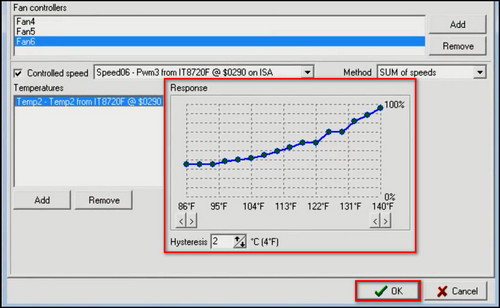
- Check the Automatic fan speed to apply the changes.
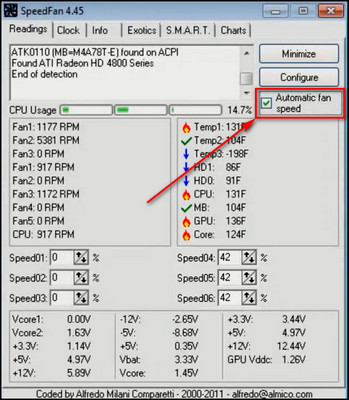
From now on, the CPU fan will raise or reduce its RPM according to the fan curve you’ve created in the SpeedFan app, but you’ll have to keep the fan running in the background.
Now that you know how to change the rotation of the fans in your PC, let’s see what should be the ideal fan speed while playing games.
What is a Good RPM for a Gaming PC?
When you are playing games and the processor temperature exceeds the 70°C mark, I’d recommend you use the full power of the CPU fan at 100% capacity. But if the temperature stays between 50°C to 55°C, you can keep the fan at 50% of the maximum RPM.
CPU-intensive games like Call of Duty: Warzone, Cyberpunk 2077, Far Cry 5, No Man’s Sky, and Assassin’s Creed Odyssey can make the processor very hot.
And usually, the thought of controlling the fan RPM of the CPU comes to mind if you hear loud fan noise coming from the PC while playing games.
So, setting the fan rotation speed to the maximum will not reduce the noise, but it’ll cool down the CPU faster and become quiet once the processor cools down.
How Many Fans Does a Gaming PC Need?
If you install correctly, then only 2 fans are enough to keep your computer at a low temperature. One fan should be at the back for outtake, and one should be at the front working as intake. For a gaming PC, you can use 3 fans, anything more than that is just unnecessary.
I have run my computer with no fans on the case. Then added 6 × 120mm fans one by one and monitored the temperature to see where the sweet spot lies for how many fans you should add into your case.
Here are the max & average CPU temperatures for different quantities of fans: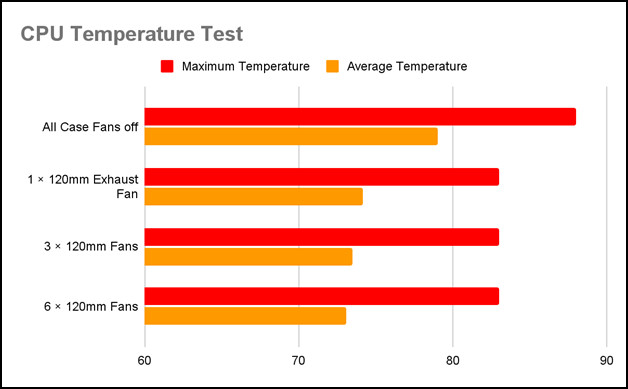
Turns out, there’s not much difference between processor temperatures when using 6 fans vs. 3 fans.
The result shows, 6 fans reduce only 0.4°C CPU temp compared to 3 fans. So, it’s definitely not worth it to add more than 3 fans to your PC case.
Does Increasing Fan Speed Improve Game Performance or FPS?
Yes, increasing the fan speed does have a positive impact on a game’s performance, giving you more frames. A decent CPU and GPU with a good cooling system will provide a nice gaming experience because when the CPU temperature rises, it lowers the performance.
So, you can improve cooling and prevent the system from overheating which can reduce the overall performance with faster fan speeds.
That said, the relationship between performance and fan speed is not always straightforward, as other factors such as CPU and GPU temperature, noise levels, and power consumption can also come into play.
In the end, whether increasing fan speed will result in a noticeable improvement in FPS will depend on your system and configuration.
FAQs
Is a 1500 rpm CPU fan good?
Yes, a 1500 rpm CPU fan is good. It provides decent airflow while keeping the noise level low.
Is 5000 RPM Of CPU Fan Good?
You should only use 5000 RPM of CPU fan if the processor is having severe overheating problems. Continuously running the fan at this speed will reduce its lifespan.
What is the best rpm for fans?
The best rpm for fans is 50 to 75% of the maximum speed.
Final Thoughts
So you see, maintaining the RPM of the CPU fan within the recommended range helps to regulate the temperature of the CPU, preventing overheating and ensuring stability.
And by following the steps in this article, you’ll understand what should be the CPU fan speed curve for different computer states that gives you the best performance while keeping the processor cool and the computer quiet.
Leave a comment below if you have further inquiries regarding PC fans, and we’ll get back to you.




